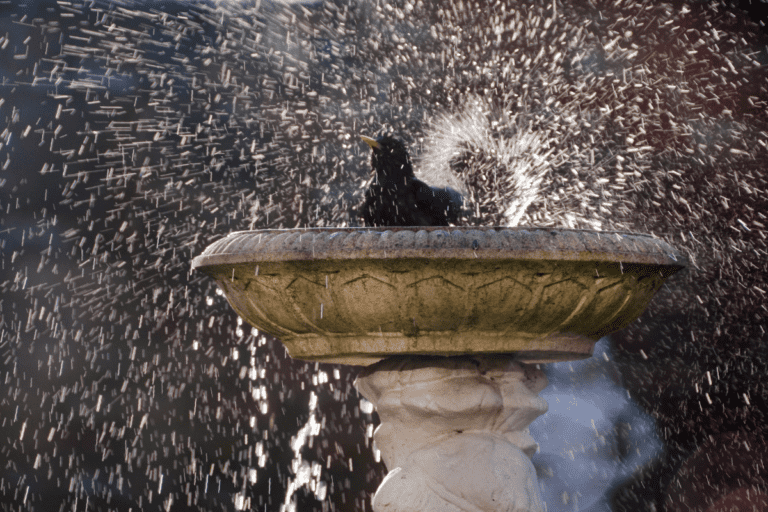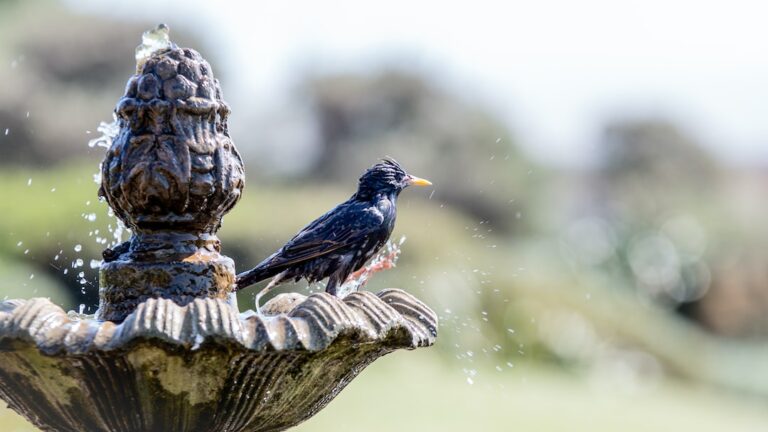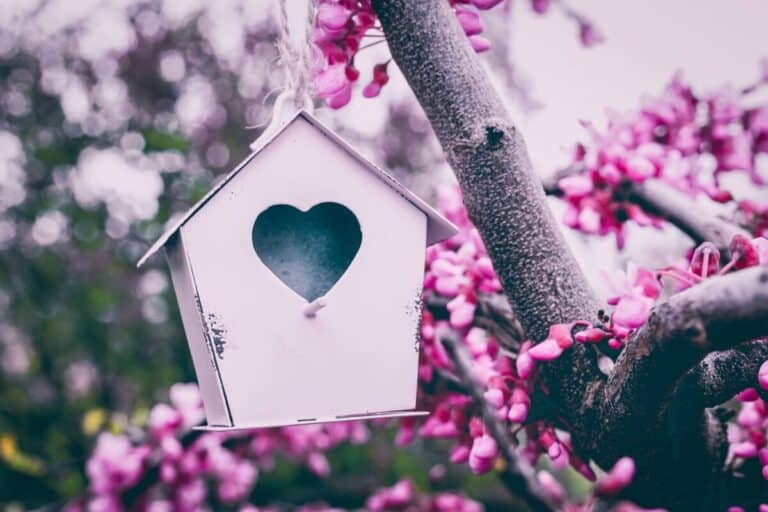Safe Paint for Bird Feeders: 11 KEY Facts (Read THIS First!)
We’re reader-supported; we may earn a commission from links in this article.
Painting bird feeders is a great idea, but you may wonder: “What kind of paint is safe for painting bird feeders?”
That’s what I thought, too!
So, I did some deep research on this topic so you can rest assured that you don’t accidentally poison the birds with the wrong type of paint.
Here are three types of safe paints for bird feeders:
Oil-based, latex, acrylic, or watercolor paints are safe paints for painting bird feeders. Bird feeders are safe to be painted everywhere except on the interior surfaces as birds may accidentally scratch off and consume the paint. Bird feeders should be painted with any bright and primary colors.
Now you know the basics on which paint to paint bird feeders, keep reading to learn about important details you need to know before you even begin painting your bird feeder!
Let’s go!
If you’re also wondering why birds won’t come to feeders, check out this article where I list 29 reasons why!
1. The Importance of Using Safe Paint For Bird Feeders
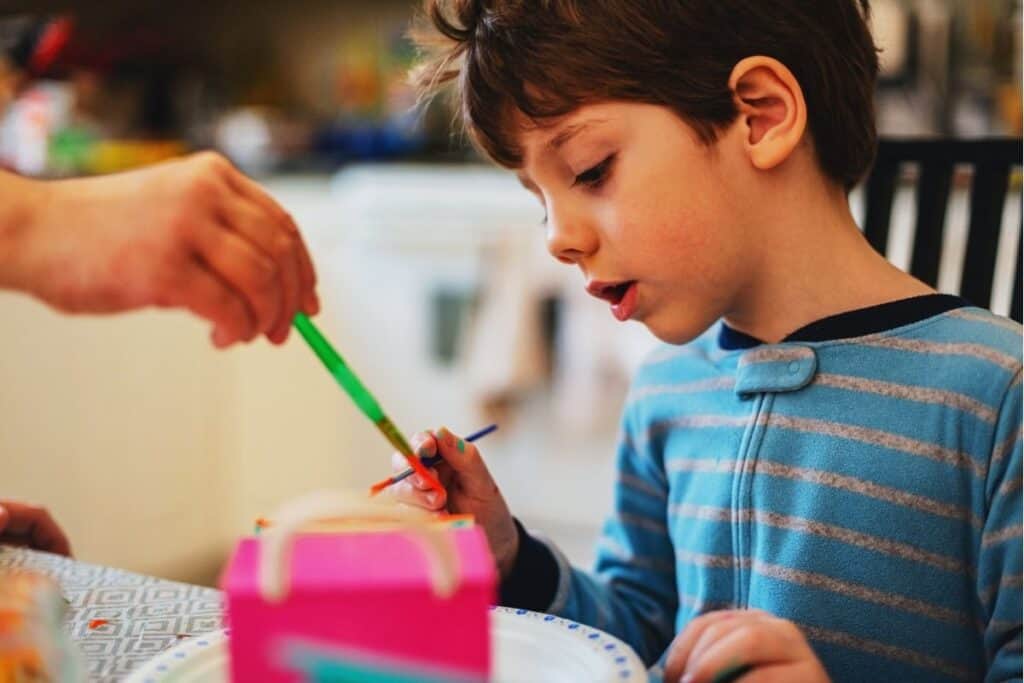
Bird feeders feed birds and therefore any paint that you use on the bird feeder should not harm the birds themselves!
That’s only gonna do more harm than good.
To highlight these, I list two reasons why you MUST use safe paint when painting your bird feeder:
(a) Bird Feeder Paint Is Constantly Subjected To The Outdoors
Bird feeders are usually placed outdoors or in your backyard.
This means it will be out in the open, subject to the sun, wind, rain, and even snow!
This means that paint used for bird feeders must be suitable for exterior usage, unlike the kind you would typically use to paint indoor furniture.
Look out for paint that provides UV protection so that it doesn’t peel off over time from the sun.
On rainy days, inappropriate paint will begin to swell and develop folds and bubbles. This is because not all paint is waterproof and suitable for painting bird feeders.
Not to worry, though, I will recommend some good paint options below. We’ll get to that!
(b) Bird Feeder Paint Is Constantly Used By Birds
Beyond just getting destroyed by outdoor elements, bird feeders are frequented by LOTS of birds. I’m not kidding!
As I don’t have a live camera to record birds, I did my research previously and wrote a post on what time of day birds eat.
Since birds frequent bird feeders in the hundreds daily, we can expect that paint will gradually start to peel off from the wear and tear of birds’ beaks and claws.
Therefore it is absolutely VITAL for us bird lovers to use paint that is safe for birds even if they accidentally consume it while trying to pick at the bird feed on the bird feeder.
Paint that is toxic can actually lead to more harm than good to the birds as it may poison and kill them over time.
What we can do is to just use bird-safe paint (and sealant!) when painting our bird feeders. I’ll get to that next.
If you’re impatient about getting birds to your feeder, read about how long birds take to find feeders.
2. Safe Paints For Bird Feeders (FULL Details)
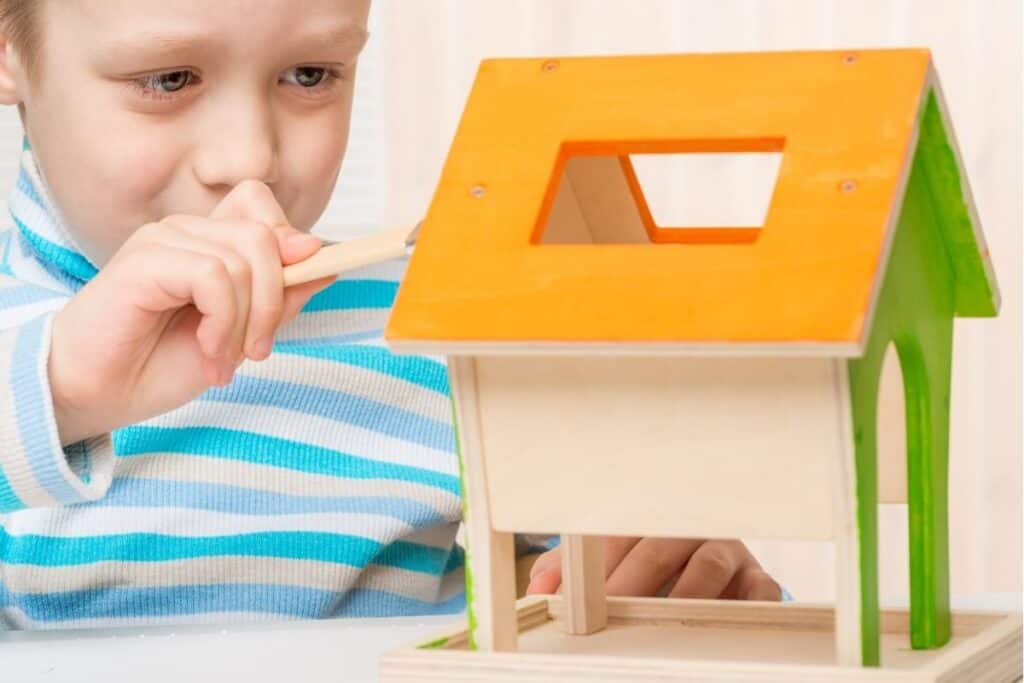
Okay, so now you know that using safe paint for bird feeders is important.
The next question in mind is: Which kinds of paint should I use?
Here’s a quick summary table you can refer to:
| Type of Paint | Description | Maintenance | You Should Get It If: | Links |
| Oil-Based | – Durable and more resistant to low temperatures – Smooth application on wooden surfaces (no need for a second coat) – Less pre-paint cleanup (can be applied to dirty surfaces) – Can be difficult to do the post-paint cleanup – Has a strong smell – Great for covering up irregularities and dents – Looks much richer with a matte/glossy finish | Low | You like rich colors with a matte/glossy finish. You also want low maintenance and easy application. | Spray-paint Brush-on paint |
| Latex | – Less durable than other paint types – Easy application to wooden surfaces (birdhouses!) – Budget-friendly – Cleanup is easy with soap and water – Produces less dangerous fumes – Requires fewer coats to cover a surface – Much less resistant to exterior elements | High | You want a cheap paint option that fits your wooden bird feeder well. Usually bought in larger quantities, it is great for multiple paint projects. | Brush-on paint |
| Acrylic | – Decently resistant but not as resistant as oil-based paint – Easy application – Dries faster than other paints – Easy post-paint cleanup – Works well on different wooden surfaces – Waterproof | Medium | You like mixing paint colors up to create more patterns and designs. You compromise on durability and application to your wooden bird feeder | Brush-on paint |
| Watercolor | You are new to paint jobs and need an easy paint application to your bird feeder. You also value decent maintenance | Medium | You are new to paint jobs and need an easy application of paint to your bird feeder. You also value decent maintenance | Brush-on paint |
You’ll see that in the table above, I recommend up to 4 types of paint you can use to paint wooden bird feeders. Safe paints for bird feeders include oil-based, latex, acrylic, and watercolor paints.
These paints are all non-toxic after they dry completely.
Do NOT use any other types of paint because you never know if they are safe for birds!
Safe paint for birds is unique depending on the surface, as its application process differs.
Make sure you use the right paint on the surface you want to paint on before painting it!
NOTE: I’ve placed links to my recommended paints in the table above!
Here’s an example of a wooden bird feeder I refer to:
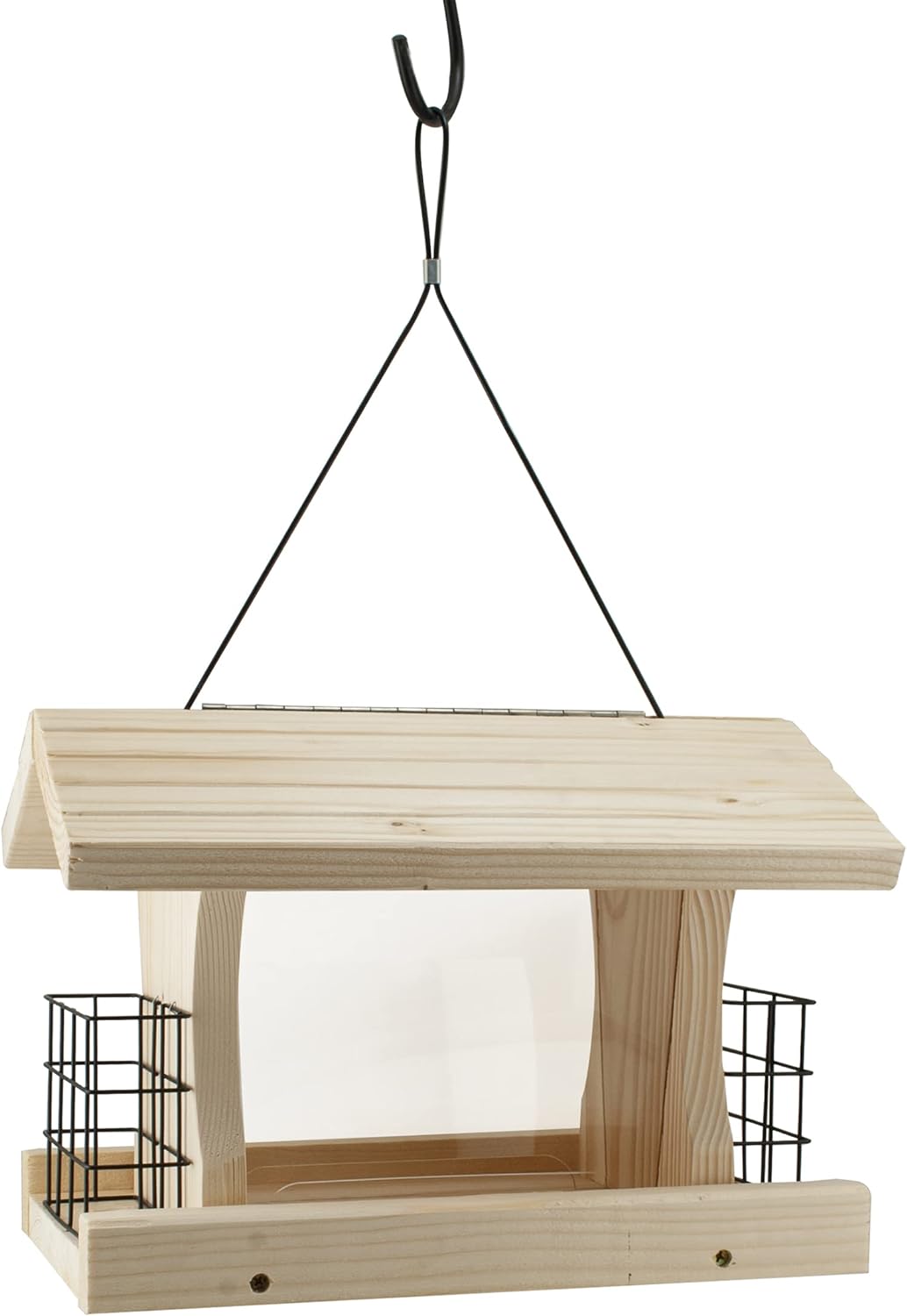
Oh, if you haven’t got a bird feeder at this point, you can consider using the above!
It’s a hopper-style bird feeder in the middle, with two suet cages on the side. It will bring in most birds you’ll see in the US!
You can sprinkle bird feed in the middle and slot two suet pieces on the side.
Here’s a link to the above bird feeder.
How many bird feeders do you need?
In my opinion, start with one and work your way upwards!
3. Should I Paint Or Stain My Bird Feeder?
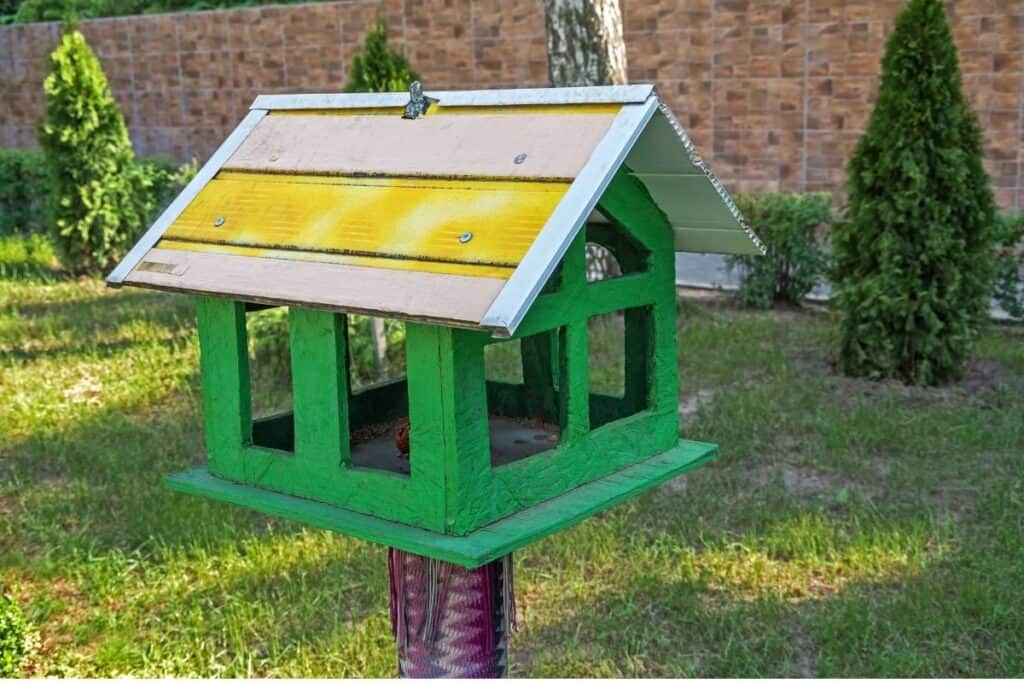
Bird feeders should be painted instead of stained as a whole. Bird feeders stained with paint have their interiors lined with paint and peel off in small chips that may be toxic to the birds. Bird feeders that are painted should not cover the interior of the bird feeder.
Why is it important that you understand this? Think about it: if you were to dump the entire bird feeder in paint, the interiors of the bird feeder would be stained, too.
Although that’s fine at the start, over time, when birds perch on the bird feeder and peck the inner surfaces of the feeder, then we have a problem.
Small chips of paint may fall off as a result! This may cause great harm to birds, as mentioned in the first part of this article.
So, don’t be lazy and just paint your bird feeder; don’t dunk it
4. What Color Should You Paint A Bird Feeder?
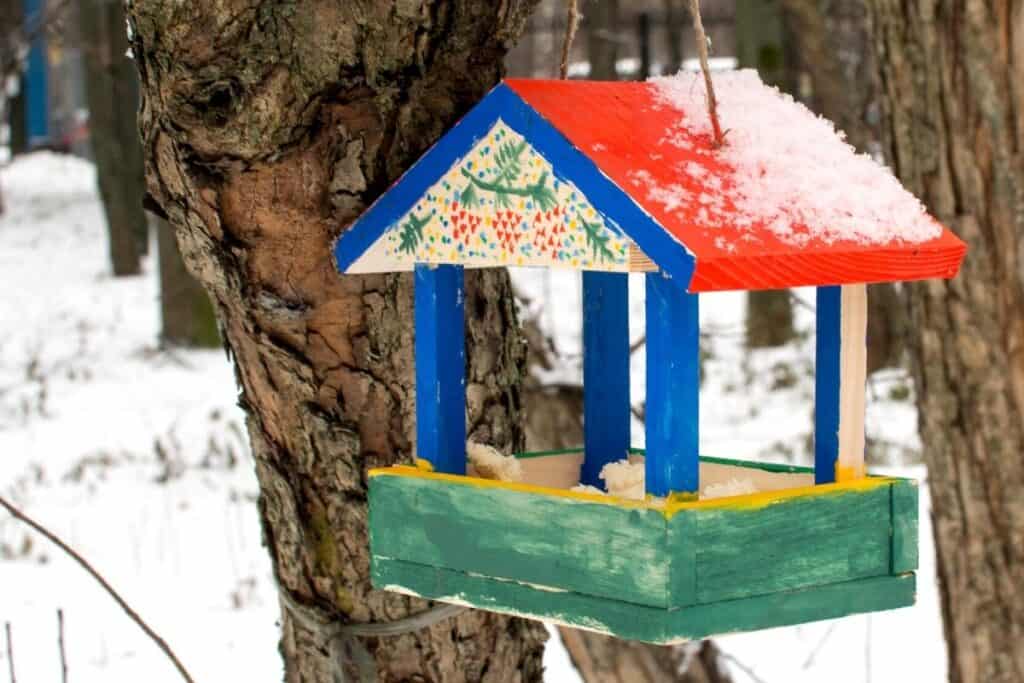
Now that you know what type of paint you can use, naturally, you’ll think of the color of the paint.
Here’s what I recommend:
Bird feeders should be painted with any bright or primary colors. These colors include red and pink to attract hummingbirds, orange to attract orioles, blue to attract bluejays, and yellow to attract goldfinches. Drab camouflage colors like green can attract skittish birds. White scares birds away.
| Bird Feeder Color | Bird Species Attracted | Reason | Amazon Link |
| Red and pink | Hummingbirds | Red and pink look like their food sources (beebalms, petunias) | Link (red) Link (pink) |
| Orange | Orioles (Baltimore, bullock’s, Altamira) | Attracted to their plumage color: orange | Link |
| Blue | Bluejays, bluebirds | Attracted to their own plumage color: blue | Link |
| Yellow | Goldfinches, warblers, hummingbirds | Attracted to their own plumage color: yellow | Link |
| Camouflage colors (brown, green, grey) | Skittish species (thrushes, ground feeders, doves) | Camouflaged patterns help skittish bird species feel safe | Link (green) |
| White | NONE | Birds interpret white as danger or aggression | – |
All of these are based upon the gathered opinions of forums I’ve read online by many bird feeding enthusiasts!
You’ll be fine if you stick to these colors. 🙂
You’ll see in the table above that I mentioned that birds tend to visit bird feeders that resemble their plumage color more. Did you know about this? I remember being very pleasantly surprised when I heard about it for the first time.
Birds have impeccable eyesight and are also generally very interested in bright colors that resemble their food sources!
You’ll also be really surprised that birds actually preferred silver to be their most favorite color for bird feeders. However, this is only for birds in the UK and on on tube feeders, not the hanging wooden bird feeders we are painting on!
5. Can You Paint The Interior of A Bird Feeder?
The interior of a bird feeder should not be painted. Painting in the interior of a bird feeder may cause them to come off easily in small paint chips when birds pick at the interior surfaces or from simply perching on the bird feeder. However, the exterior of a bird feeder can still be painted.
To stress the concise answer above, it is not recommended that you paint the interior of a bird feeder.
I understand that we all want our bird feeders to look pretty and aesthetic to suit the overall look of our backyards.
However, painting the interior should suffice for beauty, leave the insides of a bird feeder unpainted so birds can have a good meal without picking up any paint into their stomachs!
6. How To Paint A Bird Feeder?
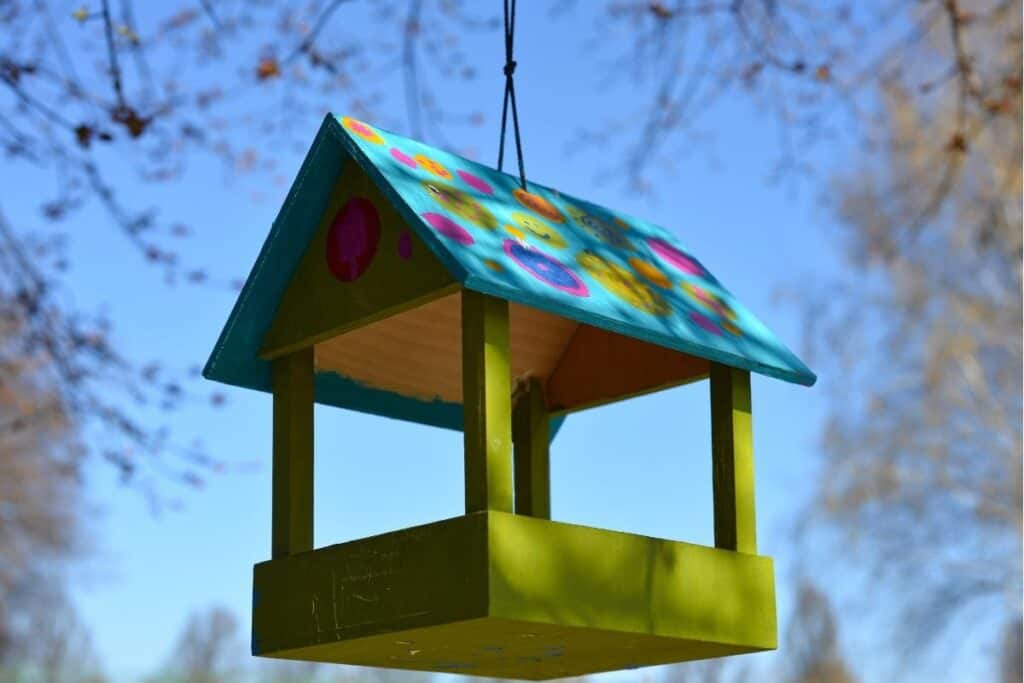
Now that you’ve learned a lot about bird-safe paint for bird feeders, their colors, and other tips, you want to know how to paint a bird feeder, right?
Here are five steps to paint a bird feeder:
- Clean Off Dirt/Residue on the Surfaces of the Bird Feeder
- Apply A White Primer Coat
- Apply Colored Paint To Exterior Surfaces
- Allow to Dry Fully
Here’s a helpful video on how to do it:
1) Clean Off Dirt/Residue on the Surfaces of the Bird Feeder
Before we begin painting your bird feeder, you’ll want to clean off any remaining splinters, dirt, or residue left on your bird feeder’s surfaces.
You can pick them up easily by wiping the surfaces with a damp cloth and then allowing them to dry off.
2) Apply A White Primer Coat
Next, you’ll want to apply a primer that is preferably white. Primers are a great help in painting because they help to act as the primary agent for the untreated wood to soak up.
This is so that the wood doesn’t soak up your actual colored paint later on!
Also, selecting white for the primer is great because it works well when painted over with brightly-colored paint later on.
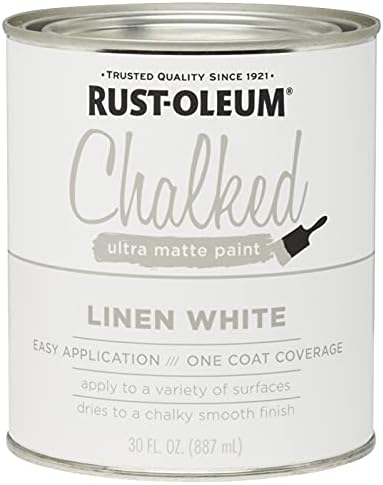
You can get a white primer from Rust-Oleum through Amazon on this link here!
3) Apply Colored Paint To Exterior Surfaces
Next, you’ll need to apply the colored paint to the exterior surfaces.
Again, if you want to refer to what type of paint you can use and links to them, check out the table I have above at point no. 2!
These paints are all non-toxic to birds.
You’ll also want to apply the paint to only the visible areas, aka the exterior surfaces that don’t have direct contact with the birds.
This means skipping the piece of wood that will contain the bird seed and all interior surfaces!
When painting, you can choose to apply up to about two coats of paint until you achieve the desired richness of color.
4) Allow the Bird Feeder to Dry Fully
Next, you’ll want the bird feeder to dry fully over a day before hanging it out for use. Enjoy your beautifully painted bird feeder!
Here’s a quick reminder not to paint the insides of the bird feeder!
Don’t follow the part of the above video that paints the feeding tray of the bird feeder, and you’ll be fine!
Here’s a quick recommendation that I want to throw in!
Here’s the nanayo Wild Birds DIY Bird House Kit:
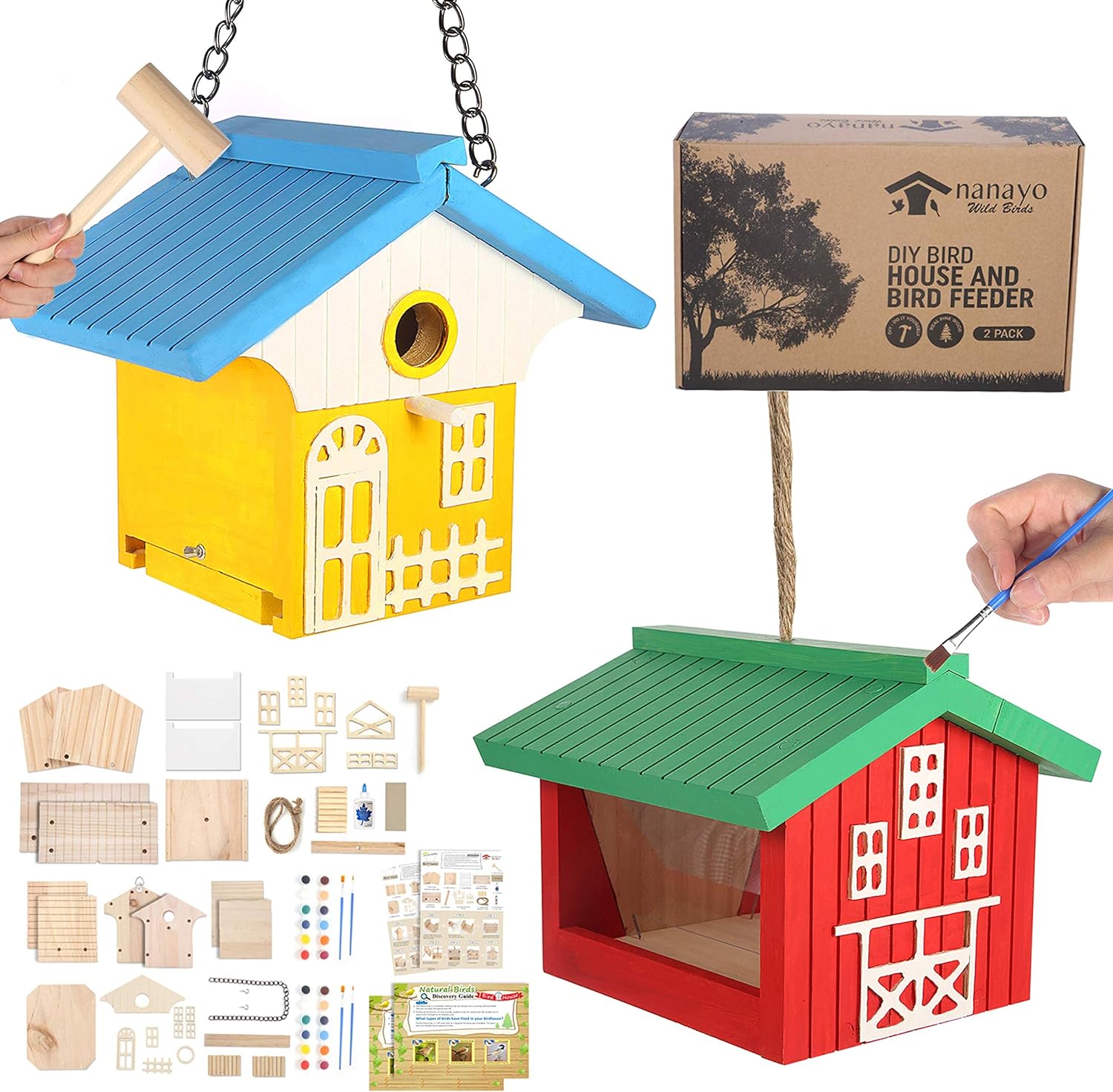
If you don’t already have a bird feeder and want the full kit, including the paint and DIY, check out this full set you can attempt on your own – all materials provided in one!
7. What Kind of Paint Do You Use On a Hummingbird Feeder?
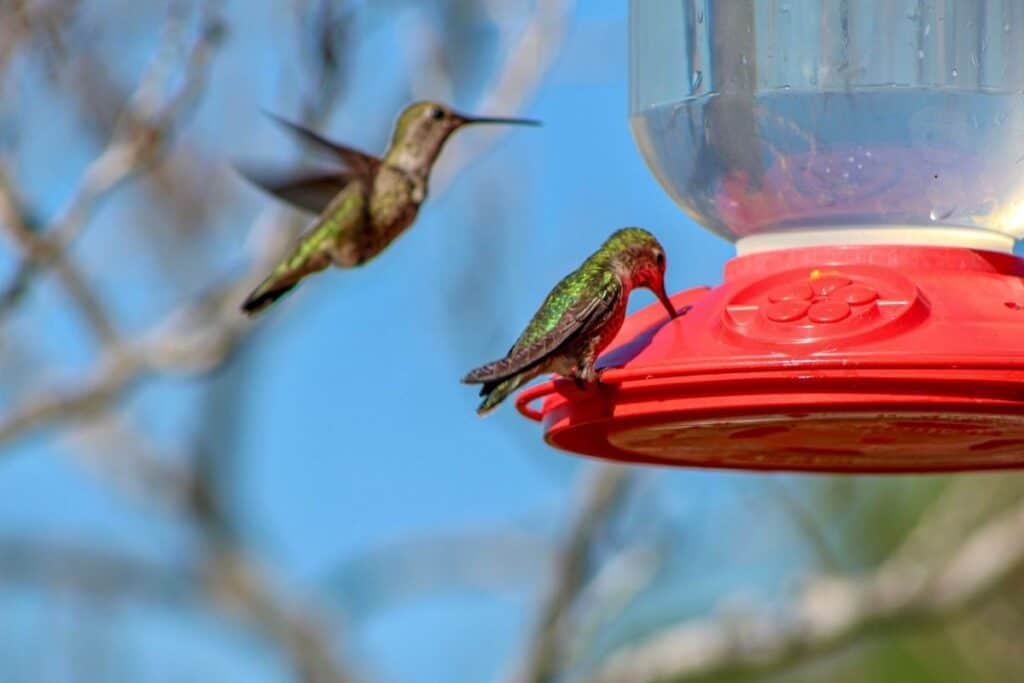
Oil-based, latex, acrylic, or watercolor paints are safe paints for painting hummingbird feeders. Hummingbird feeders are safe to be painted everywhere except at the feeding ports, as they may accidentally consume the paint. Hummingbird feeders should be painted using red or pink colors.
One thing to note about hummingbird feeders is that they feed directly through side feeding ports.
This means that hummingbirds will get their mouths in contact with that area.
So don’t paint near that area!
Although most paint is non-toxic, let’s try to avoid any direct contact of the paint with birds as much as possible!
8. Can You Use Spray Paint On A Bird Feeder?
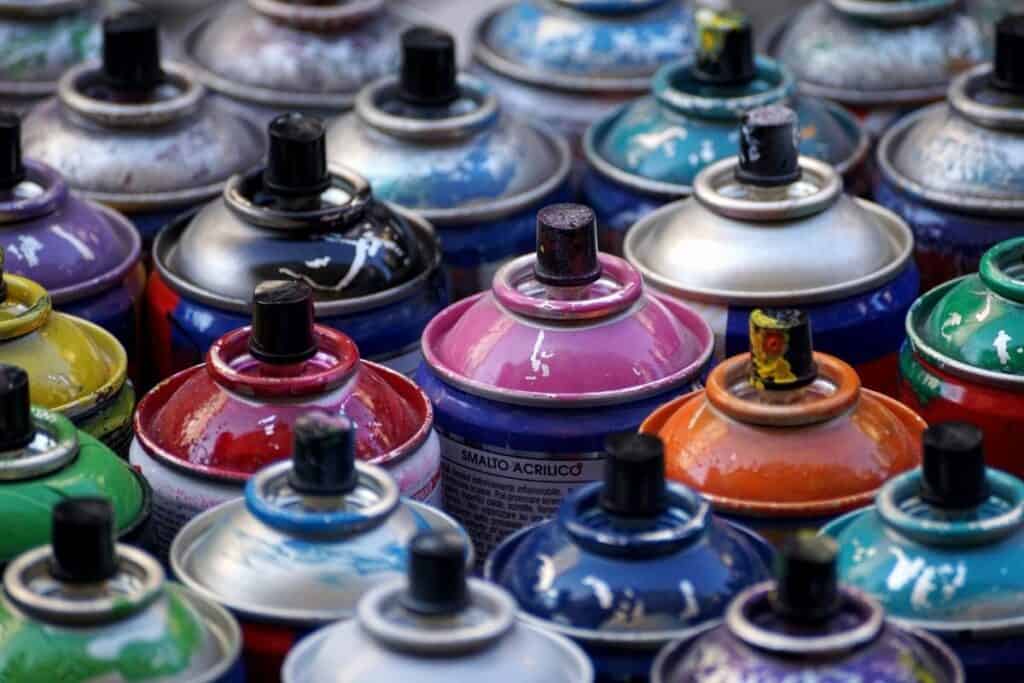
Spray paint can be used on a bird feeder, but the insides of the bird feeder must be covered during the spray painting process. This ensures that contact surfaces with birds are not spray-painted. This prevents the paint from falling off in small chips and getting ingested by birds.
9. Is Rustoleum Paint Safe For Bird Feeders?
Rustoleum paint is safe for bird feeders. Rustoleum paint is certified to be unleaded and safe for use once the paint is fully cured. All in their paint evaporates after curing, making it non-hazardous and safe for birds. Only over-exposure to Rustoleum paint fumes may cause respiratory issues.
Rest assured, Rust-Oleum is a trusted brand with which many have painted bird feeders, birdhouses, and bird baths!
Many people on forums have tried and tested their products to be good quality and safe for painting on bird products.
Here’s a recommended paint from Rust-Oleum that is Oil-based: Rust-Oleum Stops Rust Brush On Paint
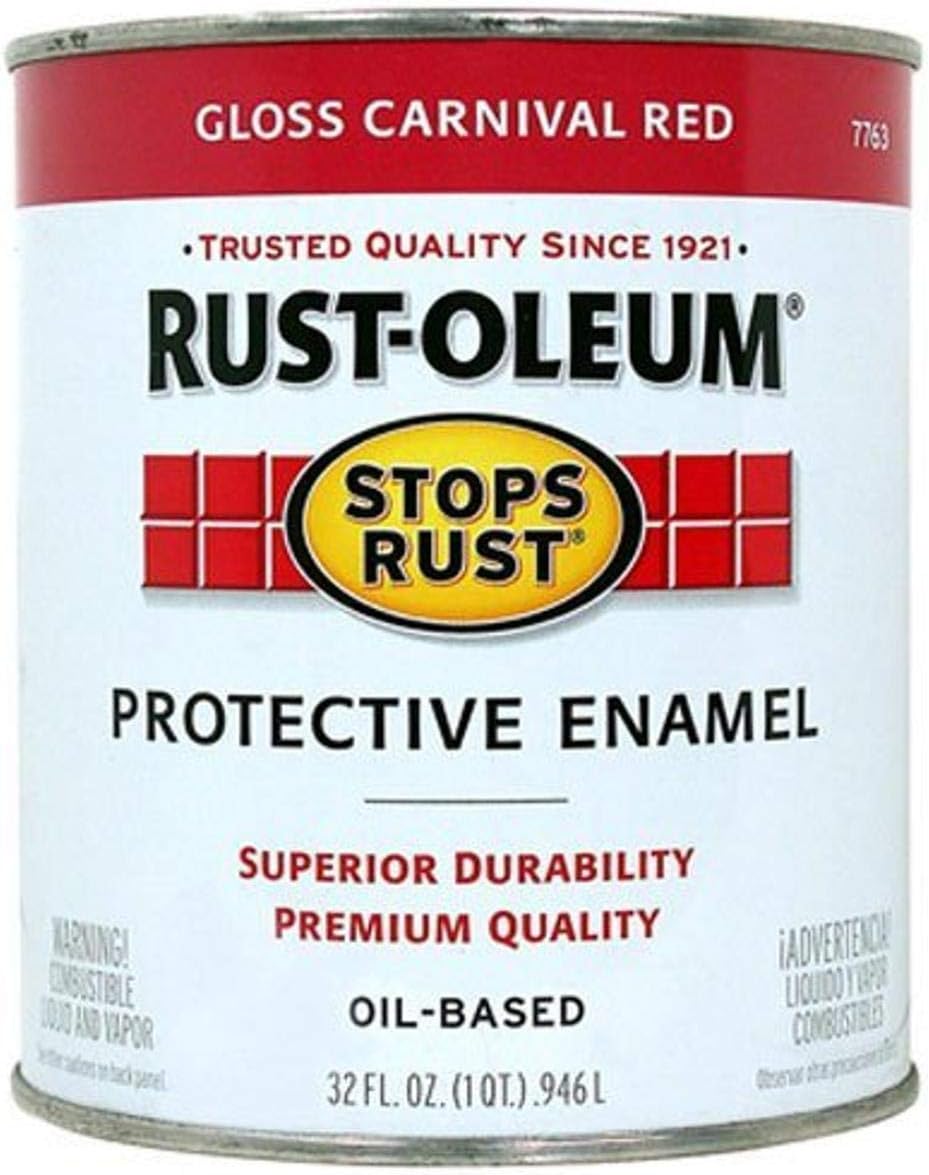
10. Bird Feeder Painting Ideas
Now that you have all this information in your brain, it’s time for some painting ideas. Painting isn’t all about its safety and the colors; it’s also about cute designs!
Here are a few pictures of beautiful bird feeders to fire up your creativity:
Feel free to look around on Pinterest for more ideas yourself! It’s a great way to get some inspiration for your masterpiece!
Here’s a Pinterest page full of beautiful hand-painted bird feeders!
11. How Do You Paint A Metal Bird Feeder?
Metal bird feeders should be sprayed on using non-toxic oil-based, acrylic, or latex paint. However, metal bird feeders must first be wiped down with a rag to remove their residue and dirt, then primed with a surface primer before being spray-painted with paint and allowed to dry.
Here’s a quick video to show how to spray-paint on metal. This will be similar to spray-painting a metal bird feeder:
Remember that you may have to spray an extra sealer over the paint to prevent it from falling out and getting ingested by birds.
Here are links to a safe and good surface primer, a good spray paint, and a safe polyurethane sealer you can use.
Final Thoughts
Alright!
Now that you’re armed with all the useful information and inspiration needed for painting your bird feeder go forth and make your masterpiece.
Don’t forget to exclude painting the interior of the bird feeder!
Thanks for reading, and I wish you all the best.
Happy birding!
My Recommended Birding Resources:
Hey there, Justin here!
Here’s a list of all my favorite resources, products, and brands I trust and love.
My Celestron Nature DX 8×42 Binoculars: It’s a great budget pair for beginner birders. Highly valued for its price! Read my review.
Safe Paint for Bird Baths Guide: Learn about non-toxic paint for painting bird baths.
Safe Sealers for Bird Baths Guide: Learn which sealers are safe for bird baths.
Safe Paint for Bird Feeders Guide: Learn what special care needs to be taken to paint bird feeders with the right paint.
Safe Paint for Birdhouses Guide: Learn about non-toxic paint for painting birdhouses. (Not the same as bird baths!)
Bird Identification Apps Guide: 2 of my favorite birding apps are Merlin Bird ID, and eBird Mobile! Merlin is great for tracking and identifying birds, and eBird Mobile is great for tracking the birds sighted when birding.
Check out my resources page for the full list of resources I recommend!

Justin Chia
Justin is the founder and author of Birding Outdoors. He is a Nanyang Technological University (NTU) alumnus with a Bachelor of Biological Sciences and a former data analyst.
Now, Justin runs the Birding Outdoors blog full-time, hoping to share his deep love for birds, birding, and nature with others.
To unwind, Justin enjoys gaming and reading.

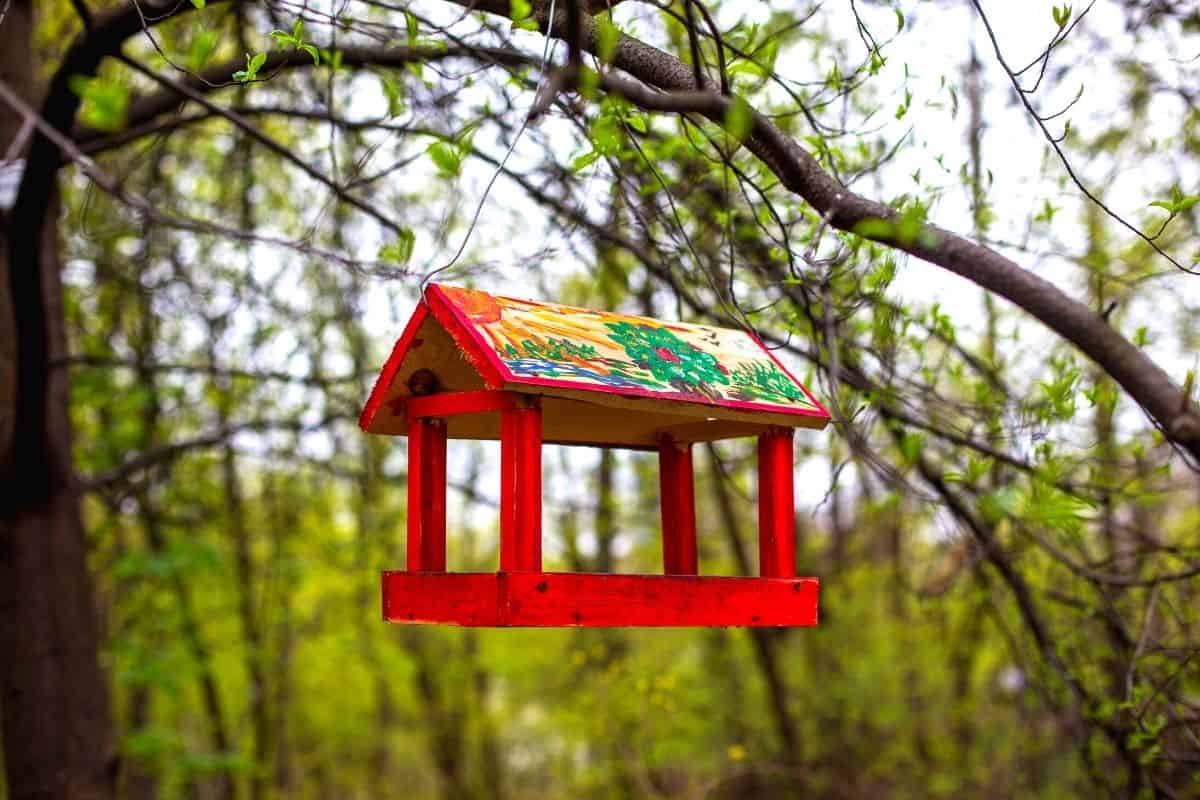
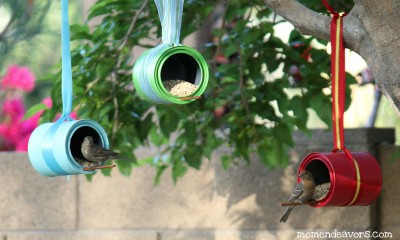
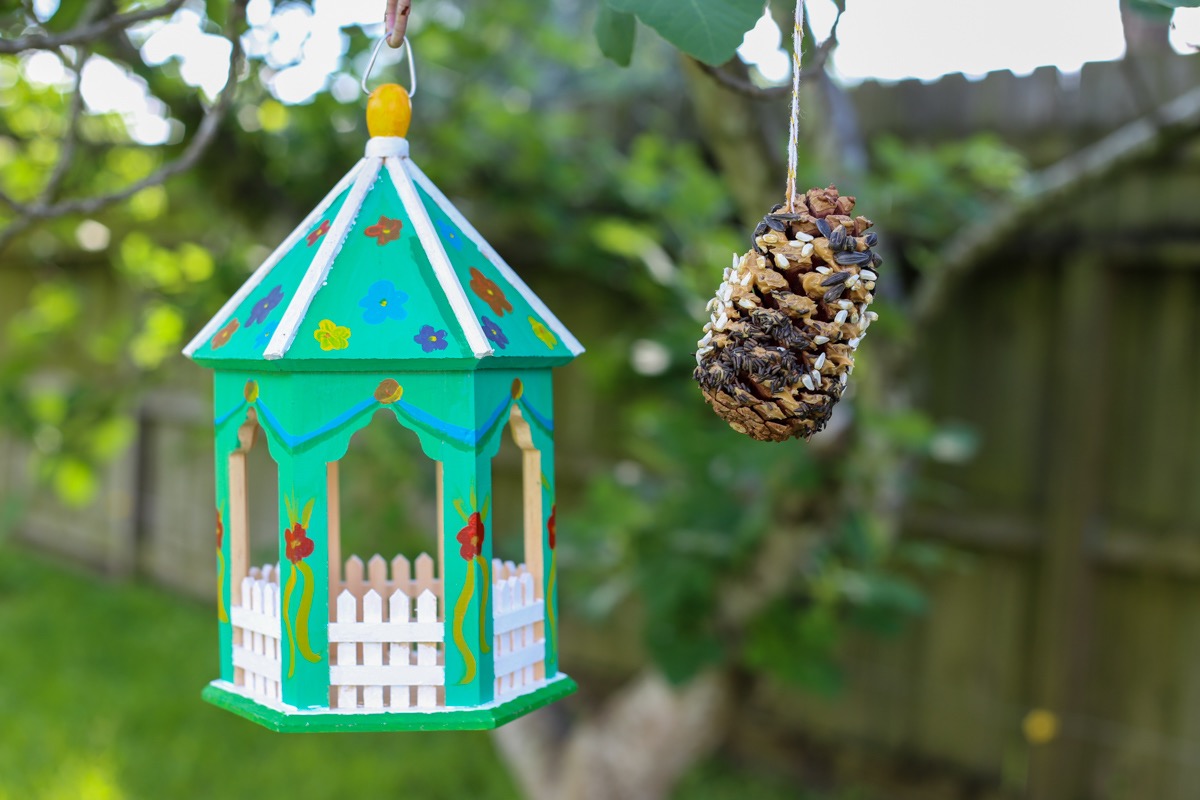

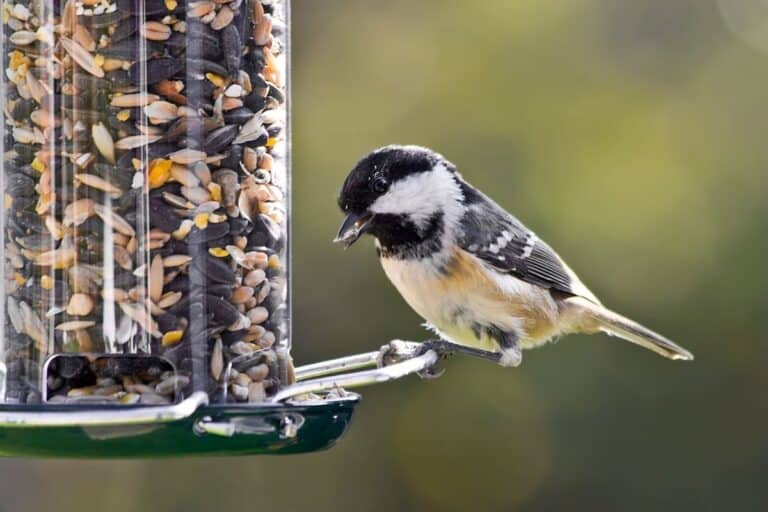
![How Long Do Birds Take To Find A New Feeder? [ANSWERED!]](https://birdingoutdoors.com/wp-content/uploads/2021/06/indigo-3590765_1280-768x512.jpg)
